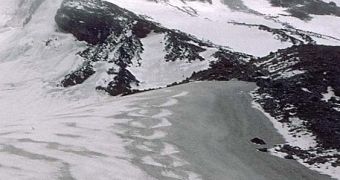This year it snowed orange in Siberia. But contamination can give many colors to snow, which is anything but white in many places.
Now a team at UC Irvine has signaled that dirty snow can be responsible for over 35 % of the Arctic meltdown, besides global warming induced by greenhouse gases.
Snow gets dirty due to soot from tailpipes, smoke stacks and forest fires which enters the atmosphere and falls to the ground. Dark surfaces absorb sun energy and get warmer, while bright white normal snow surfaces reflect heat back into space, cooling the air.
"When we inject dirty particles into the atmosphere and they fall onto snow, the net effect is we warm the polar latitudes. Dark soot can heat up quickly. It's like placing tiny toaster ovens into the snow pack," said co-author Charlie Zender, associate professor of Earth system science at UCI.
In the last two centuries, the overall Earth temperature has risen by about 0.8?C and the UCI team calculated that dirty snow is responsible for 0.1-0.15?C (19 %) of the temperature rise. But in the Arctic, the temperature rose with roughly 1.6?C and dirty snow could have caused 0.5-1.5?C of warming (up to 94 %) of the warmth.
The warming induced by dirty snow varies annually, being higher in years with many forest fires.
Most airborne soot comes from industry and fuel combustion; the rest from forest and open-field fires. The percentage of the greenhouse gases has increased by 35 % in the last two centuries.
"A one-third change in concentration is huge, yet the Earth has only warmed about 0.8?C because the effect is distributed globally. A small amount of snow impurities in the Arctic have caused a significant temperature response there." Zender said. In some Arctic areas, the dirty snow has caused enough melting to expose underlying sea ice or soil which is much darker than the snow, absorbing more solar energy and aggravating the melting.
"This cycle causes temperatures in the polar regions to rise as much as 3?C during some seasons. Once the snow is gone, the soot that caused the snow to melt continues to have an effect because the ground surface is darker and retains more heat," Zender said.
Dirty snow is more commonly encountered in East Asia, Northern Europe and Northeastern United States.
"Limiting industrial soot emissions and switching to cleaner-burning fuels would leave snow brighter," said Zender.
Cleaner snow would be brighter and would cool the temperature.
Carbon dioxide has persisted in the atmosphere for a century, so decreasing its emissions would solve the problem of the global warming in the future but with no immediate effects.

 14 DAY TRIAL //
14 DAY TRIAL //